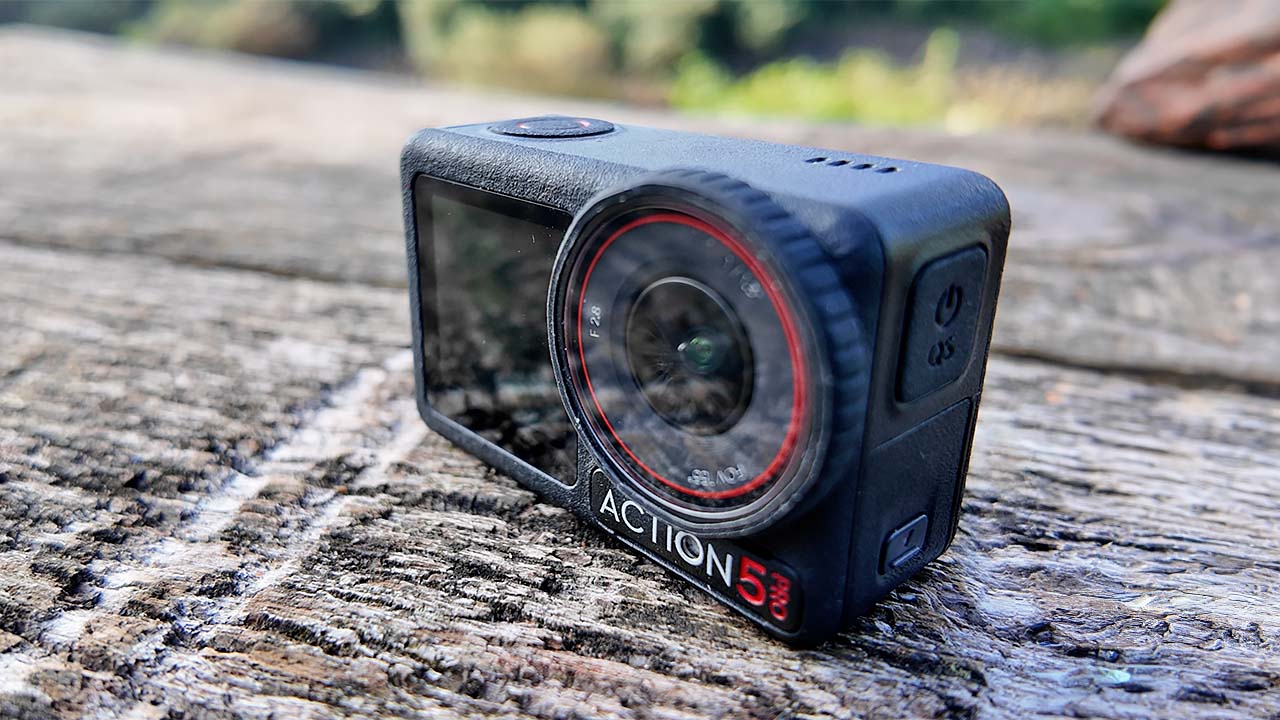
DJI has shaken up the action camera market quite a bit with its Osmo Action series and it looks like the Osmo Action 5 Pro is going to do the same. With substantial improvements in battery life, has DJI left competitors in the dust?
Previously, GoPro released the HERO13, an action camera that attempts to add some flexibility to how it can be used creatively. Shortly afterwards, DJI dropped a bombshell. It announced the Osmo Action 5 Pro, an action camera that features a 4nm processor and a claimed four-hour battery life.
One of the main weaknesses of every action camera is its battery life, particularly when high frame rates and resolutions are used. If DJI's claims were true, then it would be very fair to say that the Action 5 Pro has changed the game.
First impressions
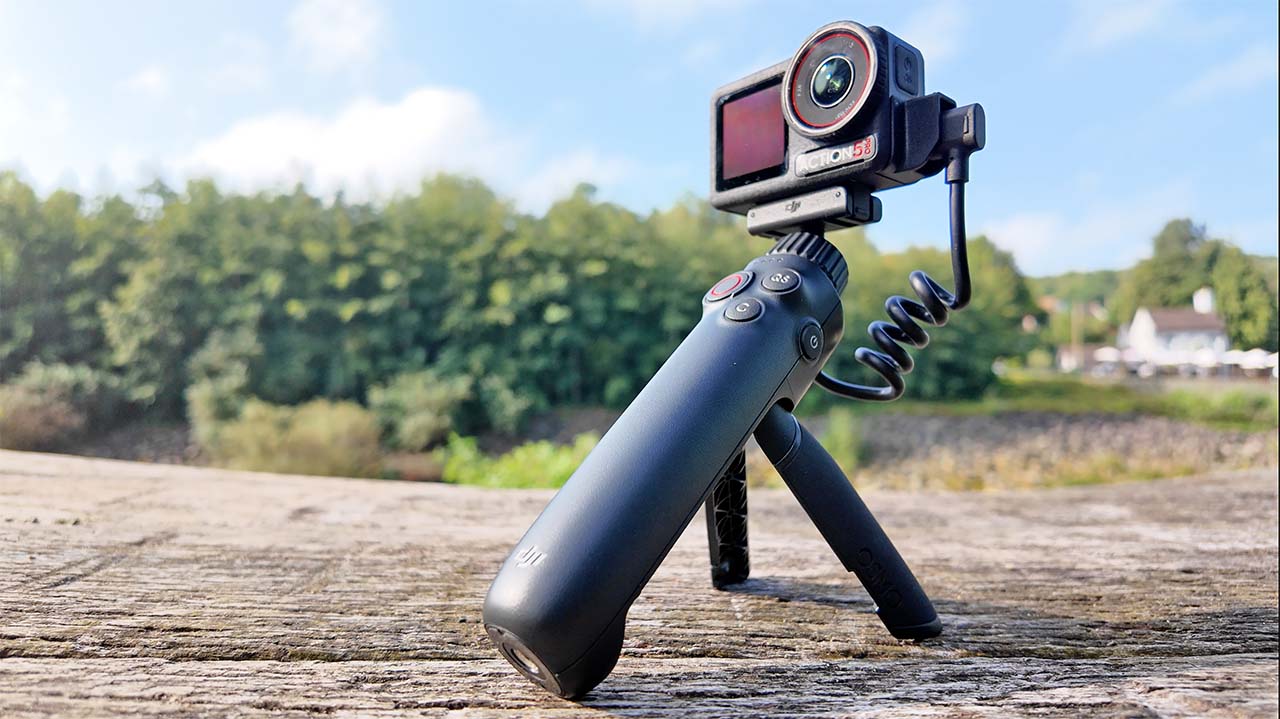
The Osmo Action 5 Pro mounted to a battery grip accessory. Not that it ever needs the extra power!
The exterior of the Action 5 looks very similar to last year's Osmo Action 4. But, what's more important about the new camera is what's inside. It features a brand new sensor, and more importantly it also features a brand new processor. It uses a four nanometer process which means it's incredibly power efficient and low temperature in operation.
Now, as I mentioned, DJI claims that this camera can get around four hours of battery life in 1080p. Power is one of those things that is incredibly important on an action camera. You don't want to be changing your battery in wet and cold environments because you don't want to risk getting any water or moisture inside the battery compartment. So, the longer the battery can last, the better. It's probably one of the key things that I would be looking for in an action camera, aside from the usual stuff such as how immersive a POV shot it can create. But, battery life is right up there as one of the most important factors in an action camera.
The new sensor on the Osmo Action 5 won't allow you to record 8K footage, even though it will produce 40MP stills. 4K is the maximum resolution that you can use for video on the camera. However, it will take 40 megapixel photos in RAW and in JPEG which gives you a lot of edibility.
The new processor inside the Osmo Action 5 has also enabled some promising new features such as an ultra slow motion mode. You can take 120 frames per second footage and it can process a new file at around 900 frames per second by performing frame interpolation.
Unfortunately, I haven't been able to test this because camera that I had been testing took an extremely hard hit when it fell off my mountain bike, totally destroying the rear touch screen in the process. There is "snail" icon that you can press on the playback screen to enable the new file creation, but since I had to control the camera using the front touch screen instead, it wasn't available there. So, unfortunately I haven't been able to test it, although it was a feature that I was really looking forward to trying out. That being said, I have been using the other slow motion modes, and it does produce an excellent image.
Ultra-wide lens
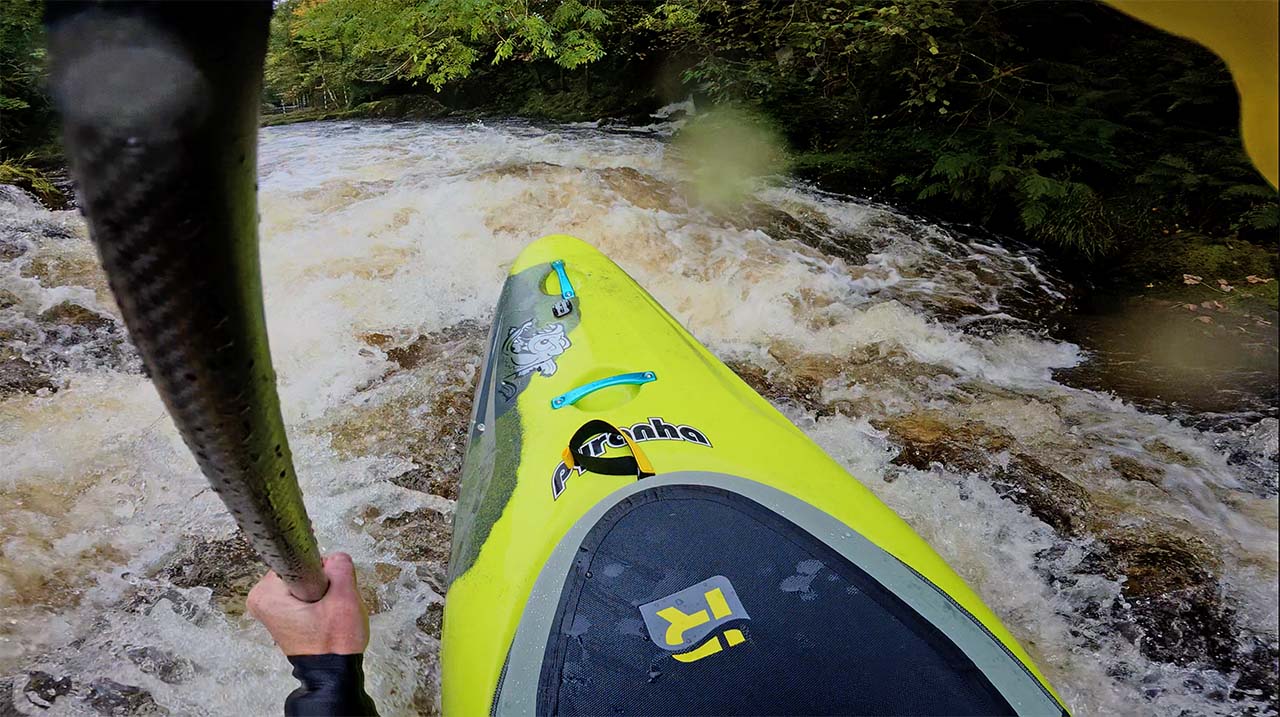
The built-in Ultra-Wide lens mode is still one of the best on the market for immersive POV.
One of the main reasons I use an action camera is for POV footage, as well as for training feedback footage while I'm practicing freestyle kayaking.For POV, the Osmo Action series is one of the best on the market. The Ultra-Wide mode isn't quite as tall the GoPro HERO13, particularly if you're using the Ultra Wide Lens Mod on the HERO13 in 1x1 mode. But, the built-in ultra wide lens on the Action 5 is incredibly good. It gives you a very immersive viewpoint from a POV perspective, and it has much less distortion than you get with the HyperView mode on the GoPro.
DJI has improved the weather sealing and the ability of the camera to withstand the deep water depths. Another notable new addition, which is very niche, is the inclusion of a depth sensor. If you use the camera outside of a dive case it will detect how far down you're going in the water, and you can use that telemetry data to overlay graphics on top of your videos.
The camera retains the magnetic clip mount, as seen in the previous Osmo Action series. GoPro has just introduced a new magnetic clip system of its own but DJI's has gained ground and therefore it's very easy to get hold of these mounts from third parties, as well as DJI itself.
Last year, when I tested the Osmo Action 4 in Norway, it took some huge hits when I went upside down a few times while steep creaking on the Stør Ulla. The mounting system remained totally solid, so I know I can trust it to keep the camera in place, no matter how hard a hit it takes.
Fast charging also features, and is a capability that I really wish GoPro would add. You can charge the Action 5 to get around two and a half hours runtime within 15 minutes. I've lost count of the times I've forgotten to charge a camera, or needed to use it at the last moment. Fast charging like this means that you will never be in a position where you can't take the camera out with you.
D-Log M
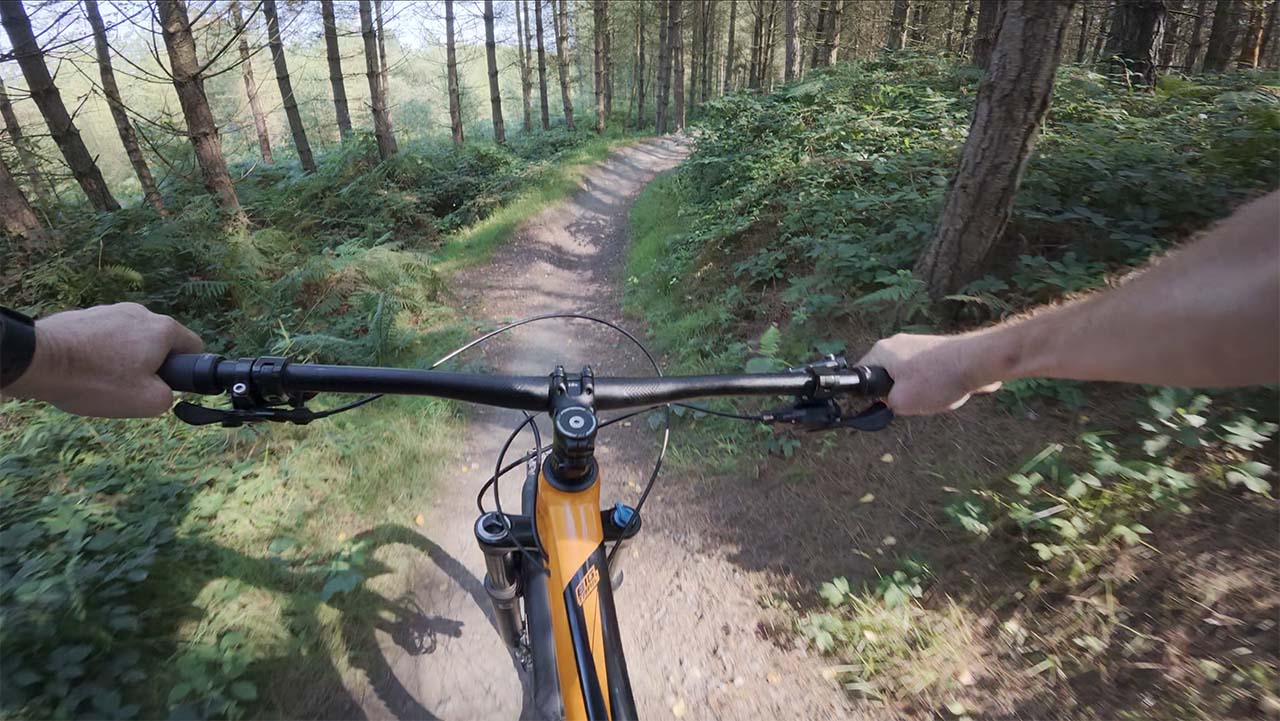
The D-log M mode has a claimed 13 stops of dynamic range, and offers a decent amount of flexibility for grading and matching to other cameras.
D-Log M also features with 10-bit colour. There's also a mode inside the camera which allows you to correct for the log profile. This doesn't bake in the image in camera, but it's a reference point when you're looking at the LCD to see a log corrected image.
Just like the GoPro, the Osmo Action 5 Pro features a hydrophobic lens protector. This is a screen on affair, but it has a rubber surround that comes off it quite easily. It's something that was a bit of a problem on the previous cameras, and I'm not entirely sure why DJI hasn't just made this a fixed item that won't come off.
The front display is also a touch screen display. After the destruction of the rear display, I was incredibly thankful for the ability to operate the camera still from the front LCD. The damage to the rear screen does highlight a problem with all action cameras at the moment just how vulnerable those rear LCD screens are. I'm not sure what the solution is, but for cameras that are designed to be placed into situations where they are likely to take hard impacts, it's an issue that needs solving.
Audio
Audio is another area where the Action 5 Pro has an ace up its sleeve. You can wirelessly connect up to two DJI Mic 2 microphone transmitters. You can also take advantage of the 32-bit float backup audio recording as well, all of which means that the Osmo Action 5 Pro records the highest quality audio in its genre. The main drawback is that the microphones are not waterproof and so you won't want to use such a system in a water sports environment. But if you're in good weather while mountain biking, and you might want to do commentary while you're doing your activity or just plain old vlogging, this is a great solution.
There is no other action camera that can do this. While you can connect the DJI Mic 2 microphone to a HERO13, it connects by transmitting 16Khz audio, which is pretty low quality. So, if audio is your thing then this is definitely the action camera you will want to get.
Another clever function of the Osmo Action 5 is that it has the ability to track you, almost like a gimbal. In tracking mode, it records at 2.7k resolution, and it will pan around the image as if it is a moving gimbal. It seems to do some sort of perspective correction as well so it does in fact look like it's on a gimbal, rather than looking like it is simply panning around the image to follow you. The quality doesn't seem quite up there with the other modes, and you can't record in D-log M, but it's quite a clever function nonetheless and I can see this getting better and better as these cameras develop further.
The reliability of the camera has been stellar, which is to be expected of a DJI camera. The only thing I've noticed occasionally is that sometimes when I've turned it on it has taken a few seconds. Generally it is much faster at switching on than a GoPro but there have been a few occasions where I've had to wait a longer period for it to turn on. I'm not sure why that is. It's probably something that can be corrected in a future firmware. Most of the time though, it does get up and running much more quickly than a GoPro.
Low Light

The Super Night mode on the Osmo Action 5 does a good job of producing a usable image in extremely low light conditions if you need a quick result.
The Action 5 features a Super Night mode on it for shooting in extremely low light conditions. Now, I'm of the opinion that action cameras are not really low light creatures, and I'm not entirely sure who is really going around shooting low light footage all of the time, while wandering around town in the pitch black expecting super amazing footage to result.
It seems to me to be a very niche use, but action camera manufacturers are taking note of the vocal demand, and they are including more of these modes on these types of cameras.
The low-light mode on the Action 5 performs quite well, but just like some of the other modes on other cameras you should expect to take a bit of a quality hit. The mode uses a lot of noise reduction in-camera, and you can't use the D-log M mode or adjust your picture profile settings quite as much as you can in the standard modes. To my mind, low light modes are a little bit of a gimmick, but it is there if you want it.
Battery life
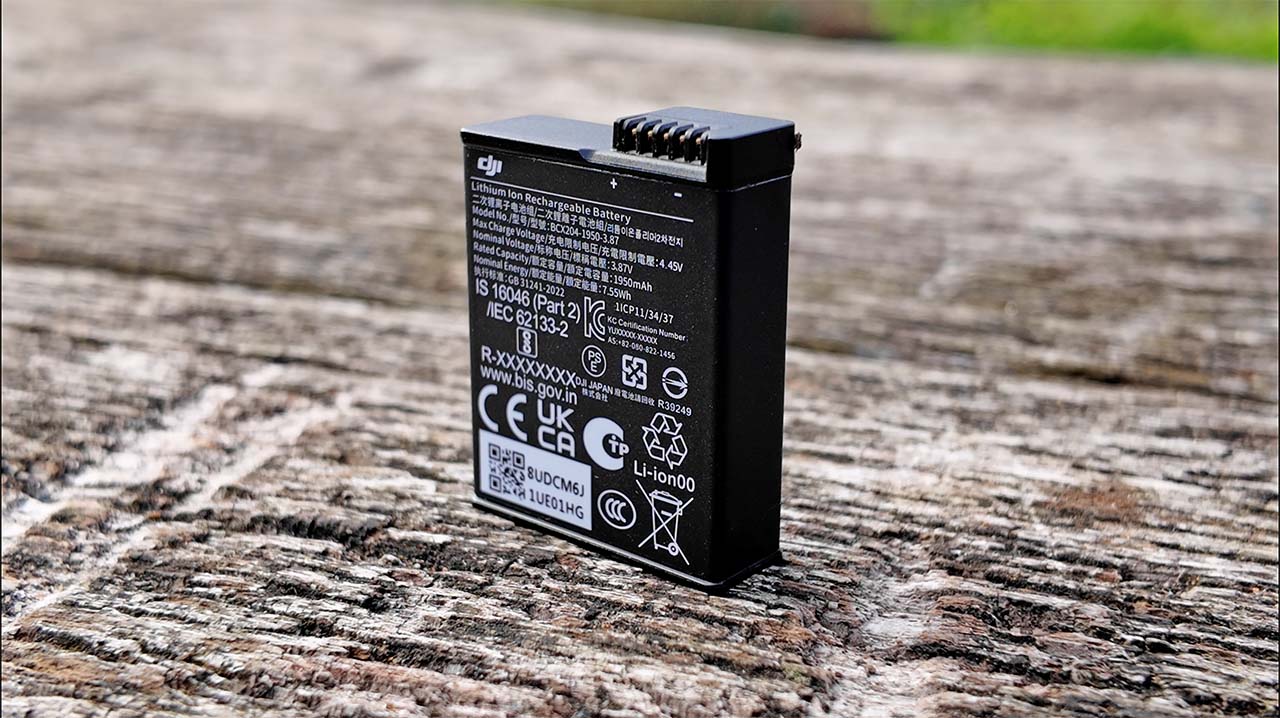
The battery life on the Action 5 Pro is simply incredible.
Okay, so how does the much proclaimed battery life work out in the real world?
Well, I don't tend to use the 1080p modes that have been used in DJI's official timings. Instead, I've been using it in 4k most of the time. I did a continuous test with it and I managed around 171 minutes continuous recording. That was at 4k at 30 frames per second. I had the screen on and I also had the ReelSteady stabilisation on as well.
You could still touch the outside of the camera. In the recent past, action cameras had a tendency to heat up to the point where you could barely touch them. The Action 5 Pro on the other hand, was just lukewarm the entire time. It's impressive, and it's no doubt due to the 4nm processor that the camera is powered by.
Battery life is incredibly important, and for most users of this camera I can see them getting away with one battery: Two at the most will get you through most of the day, and the fact that it will fast charge to most of its capacity within 15 minutes means that you can be up and running in no time at all. You are never going to have any problems with battery life on the Osmo Action 5. In fact, I recently left the camera running for long periods during a trip down a river and it still had 62% life remaining when I got to the end.
Built-in storage
A unique feature of the Action 5 Pro is the 47 gigabytes of built-in storage. That' might not seem a huge amount in this day and age as far as SD cards are concerned, but to have it built in to the camera is another notable plus.
It means that if you are running out on your main SD card you'll still have additional storage available to you. It's actually quite surprising that it doesn't feature in any other camera of this type.
Internet chatter
One thing I do want to address is some of the internet chatter about bitrates and image detail that the Action 5 produces compared to the Action 4. There has been a lot of discussion claiming that the Action 5 produces less detail than the Action 4, and that this is down to a lower bitrate recording. This has been accompanied by comparison videos showing the differences between the cameras using the same settings.
While it is true that the Action 5 Pro records to a lower bitrate than the Action 4, it does not, in my opinion, produce less detail. The problems associated with low bitrates include image artefacts such as macro blocking, which do not in any way appear in the Action 5 Pro footage that I have seen.


Detail really isn't an issue for the Action 5, despite internet commentary to the contrary.
It's important to understand that the Action 5 Pro uses an entirely new image processing pipeline to the Action 4, with a totally different sensor and processing chip. With this in mind, even if you set both cameras to the same sharpness and noise reduction settings, you will see slightly different results.
The way in which the Action 5 is scaling the image coming off the 40MP sensor will also affect things, compared to how the Action 4 is processing footage off a lower resolution sensor. In all the tests I have done, I cannot see any detrimental issues with the image coming off the Action 5 Pro compared to the Action 4 that relate to image compression or encoding.
Conclusions
So, are there any real downsides to the Action 5 Pro? The camera is so well designed and built that it's hard to think of any shortcomings. If I could think of only one major drawback, it's the vulnerability of the rear LCD screen. This isn't a problem that's unique to the Action 5 Pro, but if the various action camera companies can find a way of toughening this up then that would be very welcome indeed.
If I was truly finicky, it's that if I want to tether for safety it I have to use the external frame on it which makes it bigger and bulkier on a helmet. But, otherwise there's not a lot to fault on it.
I am genuinely impressed with what DJI has done with the Action 5. So, the question is should you get this camera instead of the GoPro HERO13 or Insta360 ACE Pro? The battery life alone that is reason enough to take the Action 5 seriously. It's reliable, and the colours and detail are great out of the camera. It does everything you can ask of an action camera, and it does it all very well indeed.
The Osmo Action 5 Pro is available for £329 for the Standard Combo, which comes with one mount, battery, and vertical mounting frame, or £409 for the Adventure Combo, which adds a selfie stick, two extra batteries with a charging case, and an additional magnetic clip mount.
tl;dr
- DJI has released the Osmo Action 5 Pro, an action camera with a 4nm processor and a claimed four-hour battery life, addressing a common weakness in action cameras.
- The camera features a new sensor and processor, enabling capabilities such as 40MP stills, 4K video recording, and an ultra slow motion mode.
- The ultra-wide lens mode provides immersive POV footage with less distortion compared to other cameras.
- Improved weather sealing and a depth sensor for underwater use have been added, along with a magnetic clip mount and fast charging capability.
- The D-log M mode offers 10-bit color and 13 stops of dynamic range, providing flexibility for grading and matching to other cameras.
Tags: Production Review Action cameras


Comments